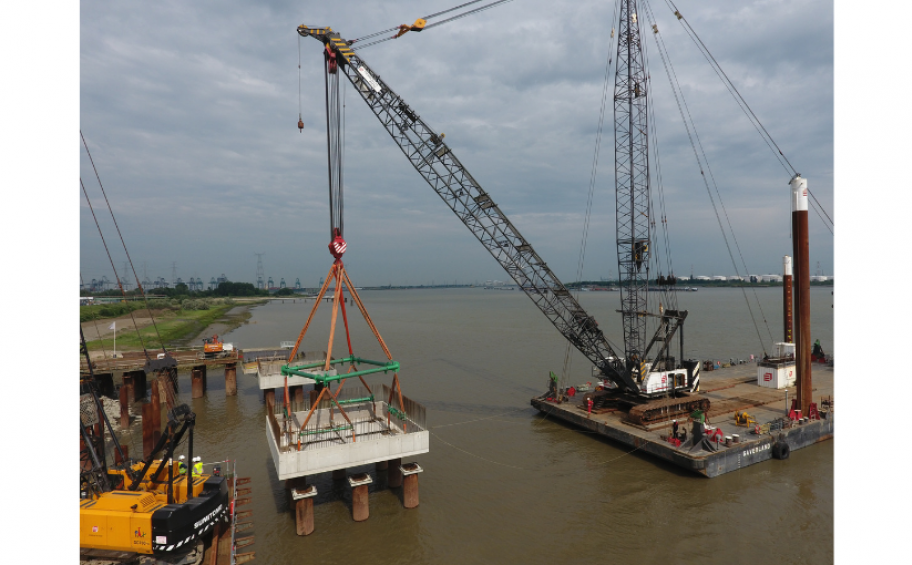Since March 2018, the Escaut has begun to climb over a new high-voltage power line in the port of Antwerp. To allow for stride, the Elia company has entrusted the teams of Herbosch-Kiere, a subsidiary of Eiffage Benelux, and Eiffage Energie Systèmes with the realization of two new towers with a height of 192 meters on the banks of the Escaut. Each tower is supported by steel tubular piles and four heavy concrete piles that are partially prefabricated and placed using a floating crane.
This work is part of Phase II of the BRABO project in Elia to consolidate the high-voltage grid in and around the port of Antwerp and to ensure the country’s overall energy supply. The high voltage cables will span the Scheldt over a width of one kilometer. This width is one of the reasons why the towers must be 192 metres high. Elia also takes into account a 100-metre clearance height at the highest level of the Escaut.
The two pylons will be located on the banks of the Escaut, at the Liefkenshoek tunnel. Herbosch-Kiere is responsible for the foundations of the pylons. The steel towers are mounted by Eiffage Énergie Systèmes.
“Each foundation consists of four 10 x 10-metre concrete massifs with a thickness of 4 metres,” says Wouter Roes, senior project manager at Herbosch-Kiere. “ Each of these massifs rests on 8 steel tubular piles (32 in total) that we have driven into the banks. These are 25-metre-long steel tubes filled with concrete.” The four massifs are connected by prefabricated ring beams that weigh about 55 tons per piece. Each tower is equipped with an inspection platform with prefabricated concrete access bridges, also resting on steel tubular piles. Herbosch-Kiere uses a partial prefabrication for the execution of the massifs and access bridges. The heaviest prefabricated elements weigh up to 110 tons per piece.
The tidal zone where the towers are built forced Herbosch-Kiere to find a creative solution: “It’s not an easy place to get to because at low tide, you have to take into account the shallow water depth and the fact that the equipment that normally sails could fail,” says Wouter Roes. “From land as well, the location of the towers is difficult to reach because of the mud on the banks of the Escaut. » This is why Herbosch-Kiere uses its Octopus crane-pontoon for the execution of the works, a pontoon that can be fixed in height on piles. The company also built temporary scaffolding from the land to the Escaut to carry out part of the work.
Heavy lifting requires heavy equipment: “We have a wide range of heavy rope cranes and pontoons so that such work is perfectly suited to us,” says Wouter Roes. “Having our own crane offers us tremendous advantages in this type of work. For the lifting of prefabricated elements, we can also use our own Antigoon floating crane. Finally, our offloading dock in Calloo allows us to produce the largest and heaviest prefabricated components in a clean, cost-effective manner.”
Herbosch-Kiere completed the foundation of the high-voltage towers at the end of last year. The towers are now mounted, Herbosch-Kiere is currently building concrete access bridges from the Escaut o the pylons. Elia will use them for the maintenance and inspection of high voltage towers.
By fall 2019, the fully completed towers will be on the shores of the Escaut.

